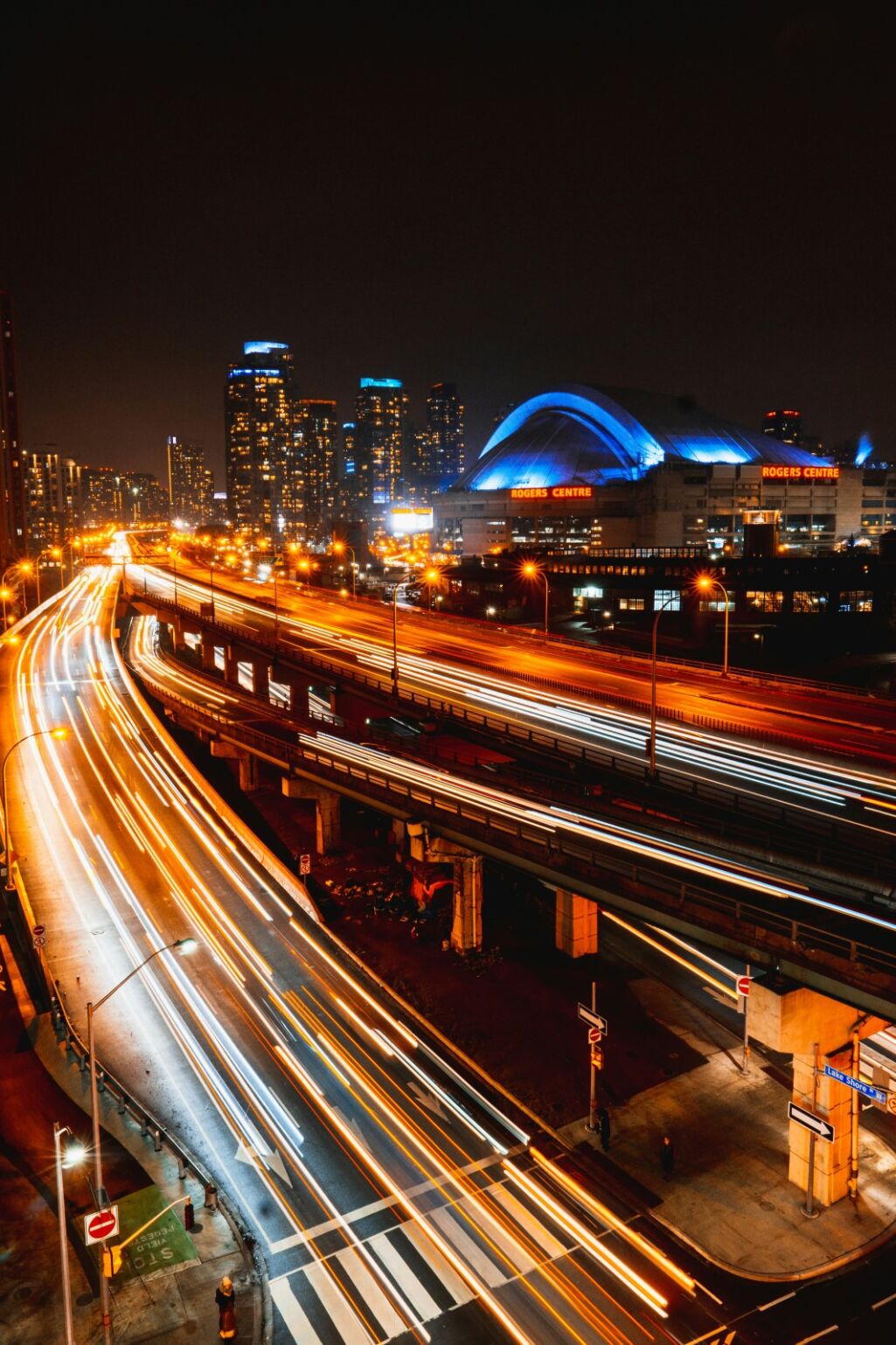Photo Credit: Brian Jones
An incomplete story of drunk dreams, depredation, and Toronto’s least favourite superhighway
Sara Moretto, Copy Editor
There might have been a time when the Gardiner Expressway wasn’t crumbling under vehicular pressure, racking up two billion dollars of tax investment to repair, an eighteen-kilometer representation of political inefficiency, or indifference, or whatever else I nod to when the bus driver vents to me. In another life, arguments over six decades of restoration efforts would have washed over my head, settling into the space a non-driver reserves for unfamiliar roads. I learn them on the news, named after governors or pioneers, discussed and decaying, like most things nowadays in Toronto.
Recently, I found myself on a train coming back to the city. The fastest way to get into Toronto is the Gardiner, where you are subjected, perhaps involuntarily, to the marvel and splendour it purportedly contains. You pass skyscrapers iced with illuminated stamps of investment firms, multiplex sports domes lit up in red neon, blue-white-orange windows of residential condominiums, three-foot patios jutting out, flower-boxed skeletons of imported plants not surviving this winter. There are grasses laser-cut with logos of Big Something. There are tents under the Bentway. At one point, you ride over the Humber River, which French colonial maps called the passage de taoronto. Billboards stretch overhead.
I grew up with bad joints outside of the city. Now and then, my mom called in my absence so I could go to downtown clinicals. I loved going to the doctor. I ate at the food court. I returned with a wristband. Everyone talked to me. It was the best day of the month. Above all, I waited for the moment when the drive swelled and exploded. At once, there was so much: paint where it wasn’t allowed, taller buildings every time I passed like a growing stamp collection. Everything rolled, roaring onwards, everyone going somewhere. Its magnitude devoured me completely, piercing me between pillars of progress like a slow-burning death. I was a speck in a carpet, swaddled and secondary to the giants around me.
Indeed, the Expressway was designed to swell and explode. A post-war offering to budding urban expansion, the Gardiner was Toronto’s wager on itself, a vein into the city that everyone would be able to tap. Before the population boom, high-rises, and Degrassi, Canadian metropolitan sprawl was the working dream, and a superhighway boasting the promised land wasn’t a bad place to start. It was slapshot, excited, a bet on black: fitting for the legacy of its namesake. Frederick “Big Daddy” Gardiner was a chain-smoking, whiskey-shooting Osgoode Law Society gold medalist, prolific gambler, and Toronto chairman. He loved urban expansion so much that he assembled only a preliminary council to commence his highway plans, quoted saying in 1958, “Once you get those bulldozers in the ground, it is pretty hard to get them out.”
As the city grew around it, the Gardiner Expressway became less idyllic, instead, a reality no one wanted to face. In the push for expansion, it was planned poorly, unexpecting of baby booms and heavy cars. The dream outgrew it. By the nineties, it was in bad shape.
One hundred million dollars of bridge restabilization over the passage de taoronto, not including the costs for weather damage, structural instability, land reinforcements, lane extensions, engineering consultations, and hiding their subsequent reports, all of which urged immediate maintenance. Construction has been linked to the Gardiner since the genesis, stirring hatred in city-goers’ hearts with closures, costs, and crappy repair. Even now, the Strategic Rehabilitation Plan, costing seven years and nine hundred million dollars, is set to end this year and sure not to last.
So Toronto hates the Gardiner, but Toronto is the Gardiner. We keep patching things up in the city like it’ll last, but it won’t really fix anything. Rent goes up. Brick churches crumble. Homeless shelters aren’t safe. I pass a store bandaged with a Xeroxed sign on my way to work: Thank you Toronto, for over fifty years of business! Wilted flowers in buckets are stacked underneath. Flip a coin: heads say that building becomes a vape shop, tails, a Starbucks.
I don’t know what the city will be like in five years, much less ten or twenty-five. I don’t know if I’ll even be here, swatted out by the broom of competitive pricing and corporate enterprise, old money, and Instagram models. There’s a unity in the struggle, but I’d still opt for long-term housing solutions and better public school programs. Things aren’t as simple as they were in the days of Big Daddy Gardiner, and I don’t know if it’s my job to fix it. I don’t know, and I don’t know who knows.
But you still meet the skyline on the Gardiner Expressway, passing penthouses and hospitals and altars of civilization, the sun dying, everything gold. You see what Frederick Gardiner wanted his highway to show when you come into the city, what he saw before anything was there. You see marvel and risk and union and aching. You see Toronto, all at once. It’s scraped together and fast expanding, bad politics and ambition. You see its wonder, expensive, upsetting, coming together, coming apart, beating, living, surviving. Toronto hates the Gardiner, but Toronto is the Gardiner. It’s where you stand and see more than is there, where you love and have loved. It’s wasted potential at the expense of fast decisions, and I guess that makes it human. It shows you everything as it falls. You take what you can and drown in the rest.


